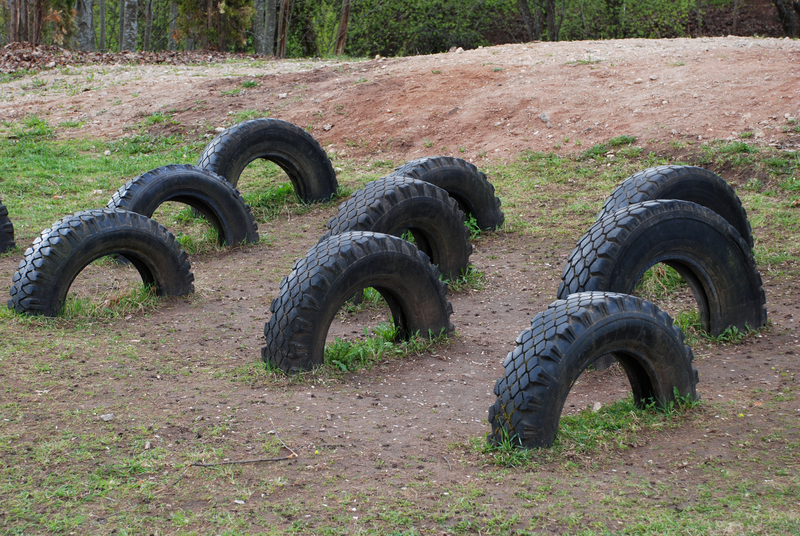The Dos and Don'ts of Throwing Away PPE Waste
The surge in use of personal protective equipment (PPE) has raised significant questions about proper disposal practices. From face masks and gloves to gowns and face shields, PPE waste is everywhere--at homes, public places, and workplaces. While these tools play a vital role in preventing infections, discarding them incorrectly can create health risks, environmental challenges, and legal liabilities.
This comprehensive guide covers the essential dos and don'ts of disposing PPE waste. By following these practical tips, you'll not only keep your environment safer but also help protect our planet for future generations.

Understanding PPE Waste: Definition and Types
Before diving into safe disposal methods, let's clarify what exactly constitutes PPE waste. PPE waste refers to all discarded personal protective equipment such as:
- Disposable face masks (surgical or cloth)
- Gloves (latex, nitrile, vinyl, synthetic)
- Face shields and goggles
- Protective gowns, aprons, and shoe covers
- Respirators and filter cartridges
Items contaminated during medical procedures, cleaning, or suspected COVID-19 exposure carry higher risks and require stricter disposal protocols. However, even routine PPE use, like masks from a trip to the grocery store, contributes to the rising garbage problem.
Why Is Proper PPE Waste Disposal Important?
- Health and Safety: Improperly discarded PPE can transmit viruses or bacteria, putting the community, sanitation workers, and wildlife at risk.
- Environmental Impact: Most PPE contains plastics that take hundreds of years to break down, often ending up in oceans and harming animals.
- Legal Compliance: This is especially vital for businesses and workplaces! Failure to follow local regulations can result in fines and prosecution.
- Recycling and Sustainability: Responsible disposal supports recycling initiatives and reduces landfill volumes.
The Dos of Disposing PPE Waste
1. Segregate Your PPE Waste
Always keep PPE items separate from regular or recyclable waste. Use a dedicated bin or bag to store used gloves, masks, and other equipment. Clearly label the bin "PPE ONLY" to avoid confusion.
2. Use Appropriate Bags and Bins
If you're discarding PPE at home, use a sturdy, leak-proof plastic bag. In healthcare facilities or workplaces, use bags that comply with local medical waste regulations--often yellow or red with a biohazard symbol.
- Always tie off PPE bags securely before disposal.
- Avoid overfilling to prevent the risk of spillage or tearing.
3. Wash Your Hands After Handling PPE
This is critical for breaking the chain of infection. After disposing of any PPE, immediately wash your hands with soap and water or use an alcohol-based sanitizer.
4. Follow Community or Workplace Guidelines
Different municipalities have varied protocols for PPE disposal. Some may provide special bins or have designated pickup days. Workplaces and medical settings often have mandatory procedures. Check and follow your local or organizational guidelines for PPE waste management.
5. Double-Bag Contaminated PPE
If PPE is visibly contaminated (for example, with blood, body fluids, or after contact with COVID-19 patients), double-bag the waste for additional safety. This reduces the chances of leaks or exposure for sanitation personnel.
6. Dispose of PPE Responsibly When Outdoors
Never drop your used mask or gloves in public spaces. Carry a spare bag or container for used PPE until you reach a suitable disposal point. Be a role model for others!
7. Educate Family, Friends, and Colleagues
Share best practices and why they matter. Many people are unaware of proper PPE waste disposal. By educating others, you amplify the impact of responsible behavior.
8. Store PPE Waste Securely Before Collection
Keep bags or bins in a location inaccessible to pets and children, reducing the risk of accidental contact. Ensure the lids are closed securely.
9. Choose Reusable and Sustainable Alternatives When Possible
Where safe and appropriate, opt for reusable PPE (like washable cotton masks). Clean and maintain these according to manufacturer instructions to minimize single-use waste.
The Don'ts of Throwing Away PPE Waste
1. Don't Throw PPE in the Recycle Bin
PPE such as masks and gloves ARE NOT recyclable in household recycling programs. They can jam machinery at recovery facilities and pose a significant infection hazard to workers. These items must be sent to landfill or, in some places, incinerated.
2. Don't Flush PPE Items Down the Toilet or Drains
Never flush masks, gloves, or wipes! These can block plumbing and sewage systems, cause environmental damage, and lead to expensive repairs.
3. Don't Litter PPE Waste in Public Spaces
Discarding your mask or gloves on the street, park, or beach is dangerous and highly irresponsible. Not only does it endanger public health and wildlife, but it also damages the reputation of your community.
4. Don't Mix PPE With Food or Yard Waste
This creates contamination risks during composting or waste diversion processes. Always keep PPE waste separate from compostable or biodegradable materials.
5. Don't Open or Sort Through PPE Waste
Resist any temptation to retrieve or separate items once they've been thrown away. PPE waste may contain dangerous pathogens, and you could expose yourself or others to infection.
6. Don't Leave PPE Waste Accessible to Animals
Animals, including pets and urban wildlife, may be attracted to discarded masks and gloves. These can become choking hazards or cause internal injury if ingested.
7. Don't Reuse Single-Use PPE
Single-use masks and gloves are designed for one-time use only. Washing, disinfecting, or reusing them compromises their effectiveness and could increase the risk of contamination.
Special Considerations for Businesses and Medical Facilities
Workplaces and medical centers generate larger volumes of PPE waste and face stricter regulation. Key actions include:
- Training staff on correct segregation and labeling of PPE waste
- Using color-coded bins, as required by law
- Arranging scheduled pickups with licensed medical waste disposal companies
- Keeping accurate records for regulatory compliance
- Regularly updating policies as guidelines evolve
*Improper disposal can result in severe fines, health risks, or closure under health and safety regulations. Regular audits and reminder signs can help maintain compliance.*
The Environmental Challenge of PPE Waste
Since the COVID-19 pandemic began, the world uses billions of disposable face masks and gloves every day. Most of these are made from plastics like polypropylene, which persist in landfills and oceans. Coastal cleanups have reported alarming numbers of discarded PPE, which can:
- Harm marine and terrestrial wildlife that mistake PPE for food
- Leach microplastics into waterways, polluting water sources
- Block drainage systems, increasing flood and sanitation risks
By following the dos and don'ts of PPE waste disposal, we can lessen our ecological impact while maintaining necessary protections for public health.
Frequently Asked Questions (FAQs) About PPE Waste Disposal
1. Can surgical masks be recycled?
No--surgical masks and most commercial face coverings contain multiple materials and layers that cannot be separated by standard recycling systems. They must go in regular waste, not recycling.
2. How should I dispose of homemade cloth masks?
Homemade or reusable fabric masks should be washed regularly and only discarded when worn out. When throwing one away, place it with general trash--never in recycling bins.
3. What about used gloves from gardening or cooking?
If gloves are not contaminated with infectious material, they can be disposed of with general rubbish. Avoid flushing them, as plastics will clog pipes and harm the environment.
4. Is it necessary to cut the straps off masks before disposal?
Yes! Cutting or snipping the ear loops before throwing away masks helps prevent wildlife from being ensnared or choked by discarded PPE.
5. Are there any recycling programs for PPE?
Some specialty recycling schemes are emerging (such as TerraCycle or hospital-based pilot programs), but household recycling does not generally accept PPE waste. Check your community for any available initiatives.

Innovative Solutions and Move Towards Sustainable PPE
- Reusable PPE: Some organizations are developing durable, medical-grade reusable PPE that can be sanitized and used multiple times, dramatically cutting down on waste volumes.
- Biodegradable PPE: Eco-friendly gloves and masks made from plant-based materials are appearing on the market. Always read disposal instructions for these products.
- PPE Collection Programs: Certain businesses and healthcare facilities now run dedicated PPE collection bins for safe disposal or recycling through specialized schemes.
Supporting these innovations and demanding sustainable solutions from manufacturers is a crucial step toward reducing our collective environmental footprint.
Conclusion: Your Role in Responsible PPE Waste Management
Proper PPE waste disposal is an essential practice in today's world--protecting not only individual health, but also that of our communities and the environment. By learning the dos and don'ts of throwing away PPE waste, you reduce the spread of disease, support recycling efforts, and help keep our planet cleaner.
Remember:
- Never throw PPE in recycling bins or public areas.
- Always use sealed bags and wash hands after handling PPE.
- Follow local guidelines and set a positive example for others.
A simple act like disposing of your mask in the right way can make a world of difference. Let's all do our part in managing PPE waste--safely, responsibly, and sustainably!